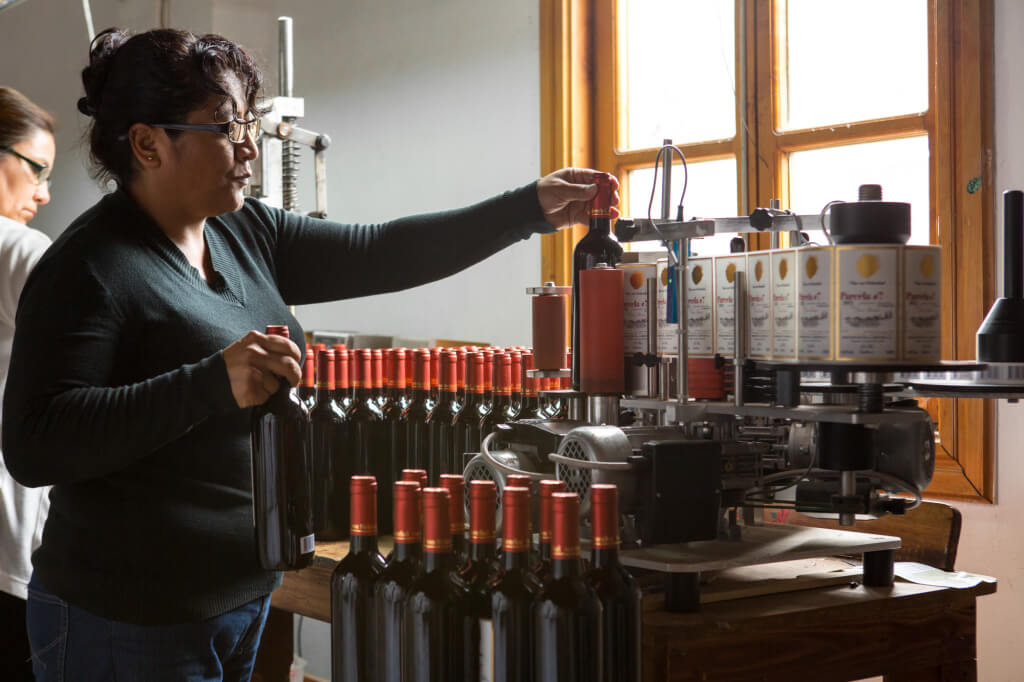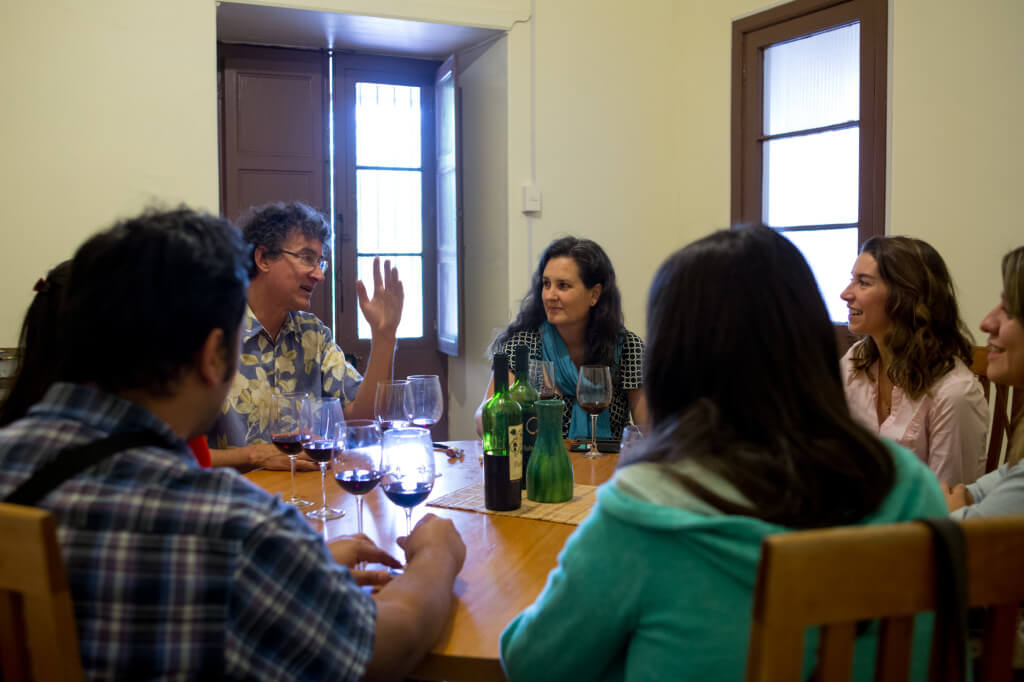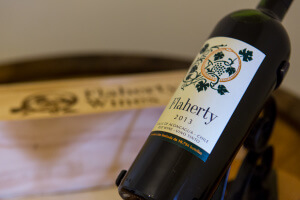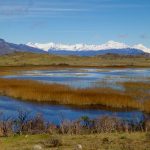On a trip up and out of Santiago to the Aconcagua Valley, you can’t help but notice how very South American it is. If you close your eyes, you couldn’t be in Napa, or anywhere else. The trees become sparser and the landscape becomes more desert-like and adobe buildings start filling in as you travel north and east of Santiago.
Once you turn off the main road, into the wine-growing regions of this valley, almacenes, those little grocery stores that dot every small Chilean town show up, advertising sacks of charcoal, empanadas, bread, anything a local might need. In this area, long a fruit-growing and packing powerhouse, producing literal tons of table grapes, as well as peaches and other stone fruit, a gated driveway could easily be the entrance to someone’s house, to a winery, or to a processing area for the high volumes of fruit that thrive in this area.
About the Aconcagua Valley
This valley is named for Mount Aconcagua, which—at nearly 7,000 meters above sea level—is the highest peak in the Americas. This eternally snow-covered peak is just north of the pass to drive over to Mendoza, the Aconcagua Valley’s Argentine wine-making neighbor to the east. And even though it’s close to the Andes, the Aconcagua Valley has a well-defined microclimate that is much warmer than some of the lower areas, which leads to thorough maturation, though it does require hard work to keep storage temperatures down for barreled wine. Thick adobe walls and using the cool night temperatures to bring cooled air into the wines, which are ideally kept at 15°C, helps. However, in practical application, it is sometimes held at temperatures warmer than that, not that you’d notice any degradation in the wine, which is world-renowned. In the valley, in addition to big names Errázuriz and San Esteban, there also several smaller producers, including the Swiss-owned Von Siebenthal, and the American-owned Flaherty Wines, both members of MOVI, a group of independent winemakers in Chile.
 What are the major influencers on wine in the Aconcagua Valley? On a recent visit to Aconcagua, as a day trip from Santiago, we asked several winemakers in the region. They all referred to the landscape and the weather. Aconcagua’s near-constant sunshine and long days are ideal for growing Chile’s emblematic Carménère grape, but that’s not all. Chile’s highest ever scoring wine is Aconcagua’s own Seña, a blend of Cabernet Sauvignon, Merlot, Carménère, Cabernet Franc, Petit Verdot and Malbec made at Errázuriz, that has outscored every other Chilean wine in international competitions. Petit Syrah, Tempranillo and other varietals grow well here as well, and some smaller winemakers are using them to great advantage.
What are the major influencers on wine in the Aconcagua Valley? On a recent visit to Aconcagua, as a day trip from Santiago, we asked several winemakers in the region. They all referred to the landscape and the weather. Aconcagua’s near-constant sunshine and long days are ideal for growing Chile’s emblematic Carménère grape, but that’s not all. Chile’s highest ever scoring wine is Aconcagua’s own Seña, a blend of Cabernet Sauvignon, Merlot, Carménère, Cabernet Franc, Petit Verdot and Malbec made at Errázuriz, that has outscored every other Chilean wine in international competitions. Petit Syrah, Tempranillo and other varietals grow well here as well, and some smaller winemakers are using them to great advantage.
 Scarce water is a factor that weighs in favor of wines from this valley. Most of the soil is alluvial and doesn’t hold water well, which means water is strictly meted out, via drip irrigation, with no surprises. In addition, rains come later here than in other valleys, so the harvest is at the whim of the enologist, not the weather. Early rains in other parts of Chile farther south, for example, can dictate a grape harvest before peak maturity, which is unheard of in Aconcagua.
Scarce water is a factor that weighs in favor of wines from this valley. Most of the soil is alluvial and doesn’t hold water well, which means water is strictly meted out, via drip irrigation, with no surprises. In addition, rains come later here than in other valleys, so the harvest is at the whim of the enologist, not the weather. Early rains in other parts of Chile farther south, for example, can dictate a grape harvest before peak maturity, which is unheard of in Aconcagua.
 We asked Ed Flaherty, who has worked in the valley for years and has his own Flaherty blend, what he expects out of Aconcagua wines. “They should be bold, full-bodied, with notes of dried fruit.” He named cherries and apricots and said he also expects very little in the way of grassy notes and for the wines to have very soft tannins. All of which makes the wine from Aconcagua some of Chile’s highest-scoring and most popular on the world market.
We asked Ed Flaherty, who has worked in the valley for years and has his own Flaherty blend, what he expects out of Aconcagua wines. “They should be bold, full-bodied, with notes of dried fruit.” He named cherries and apricots and said he also expects very little in the way of grassy notes and for the wines to have very soft tannins. All of which makes the wine from Aconcagua some of Chile’s highest-scoring and most popular on the world market.
Ready to head to the Anconcagua Valley? Fill out our form to get started.
